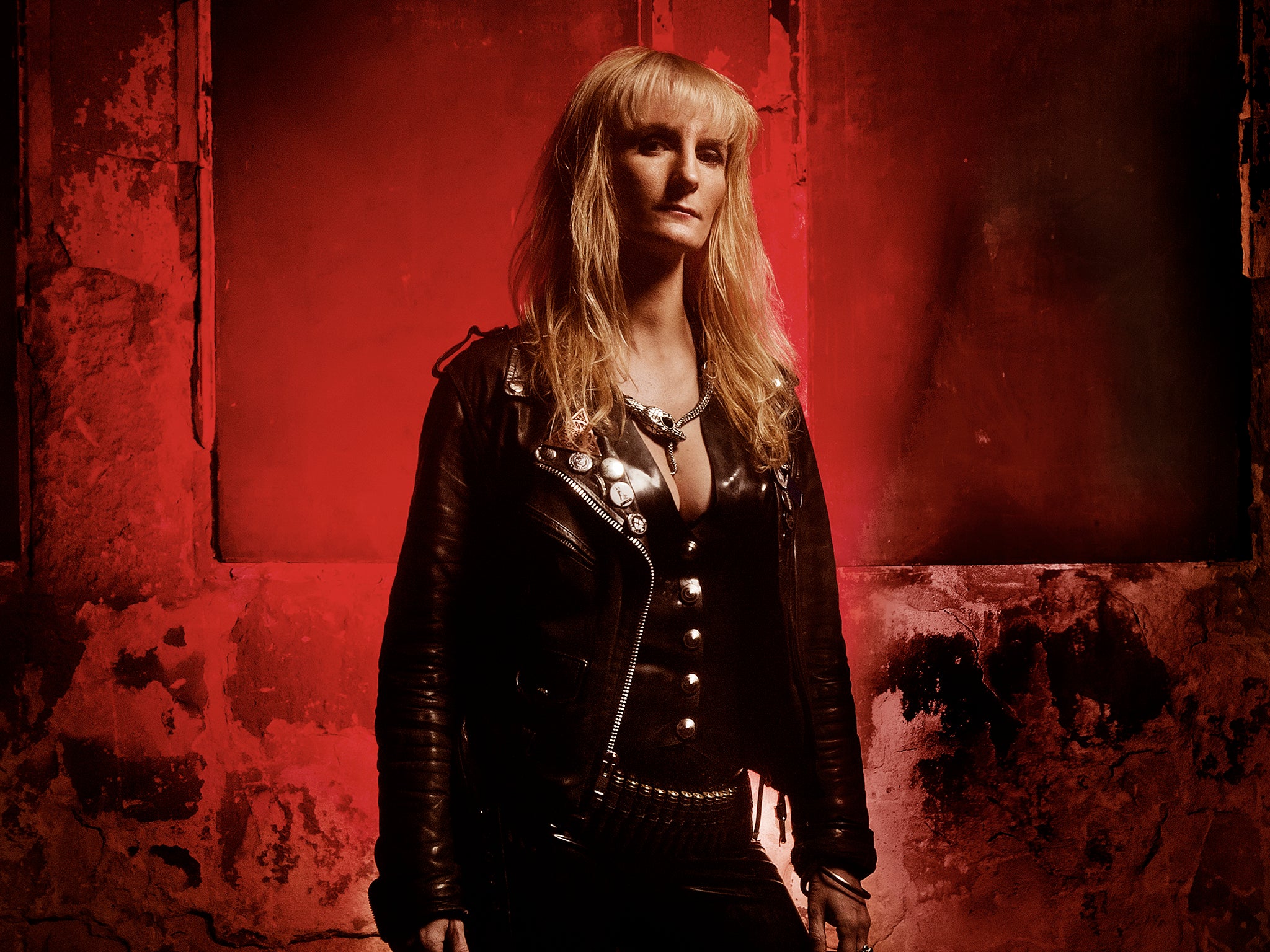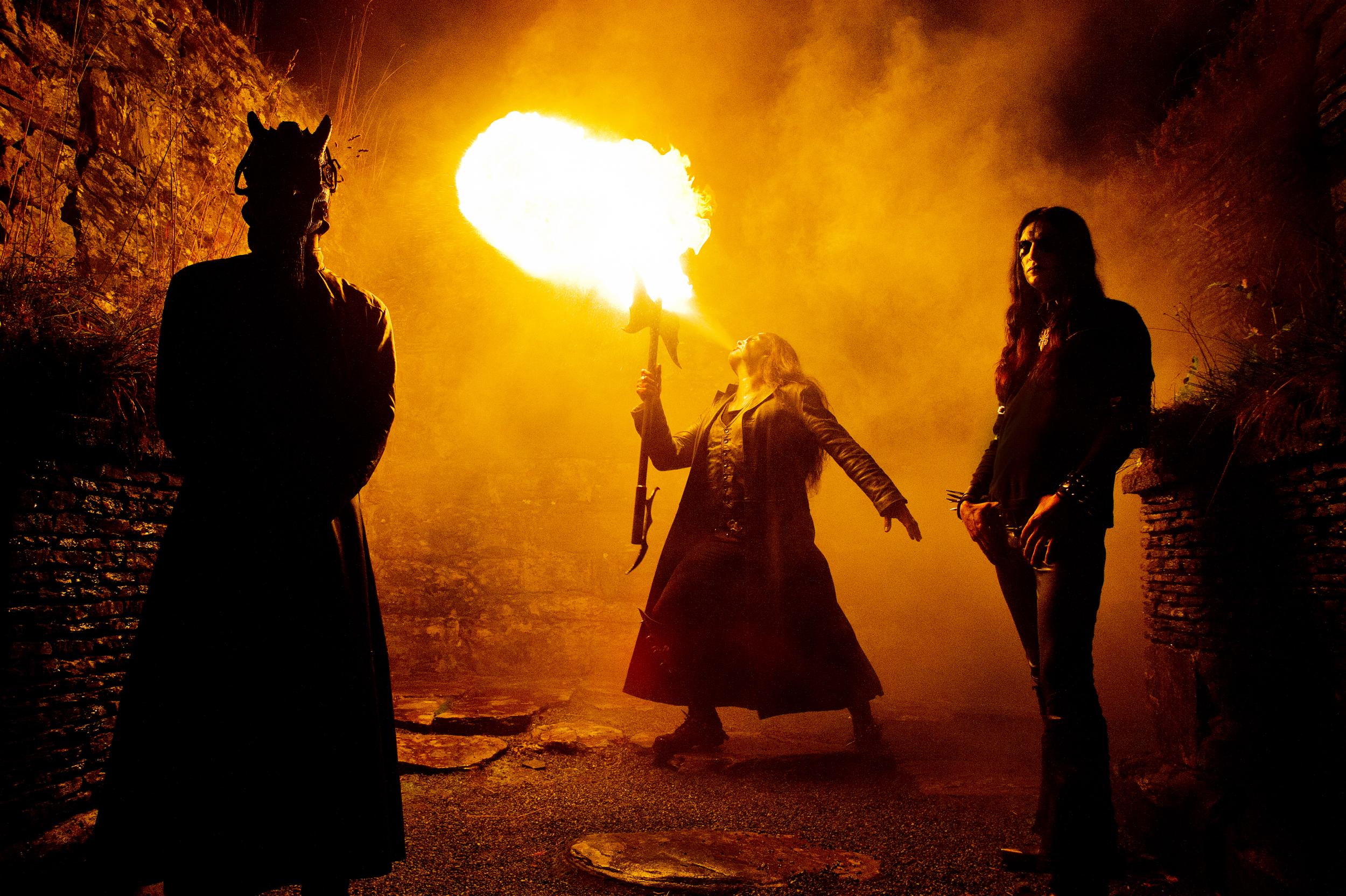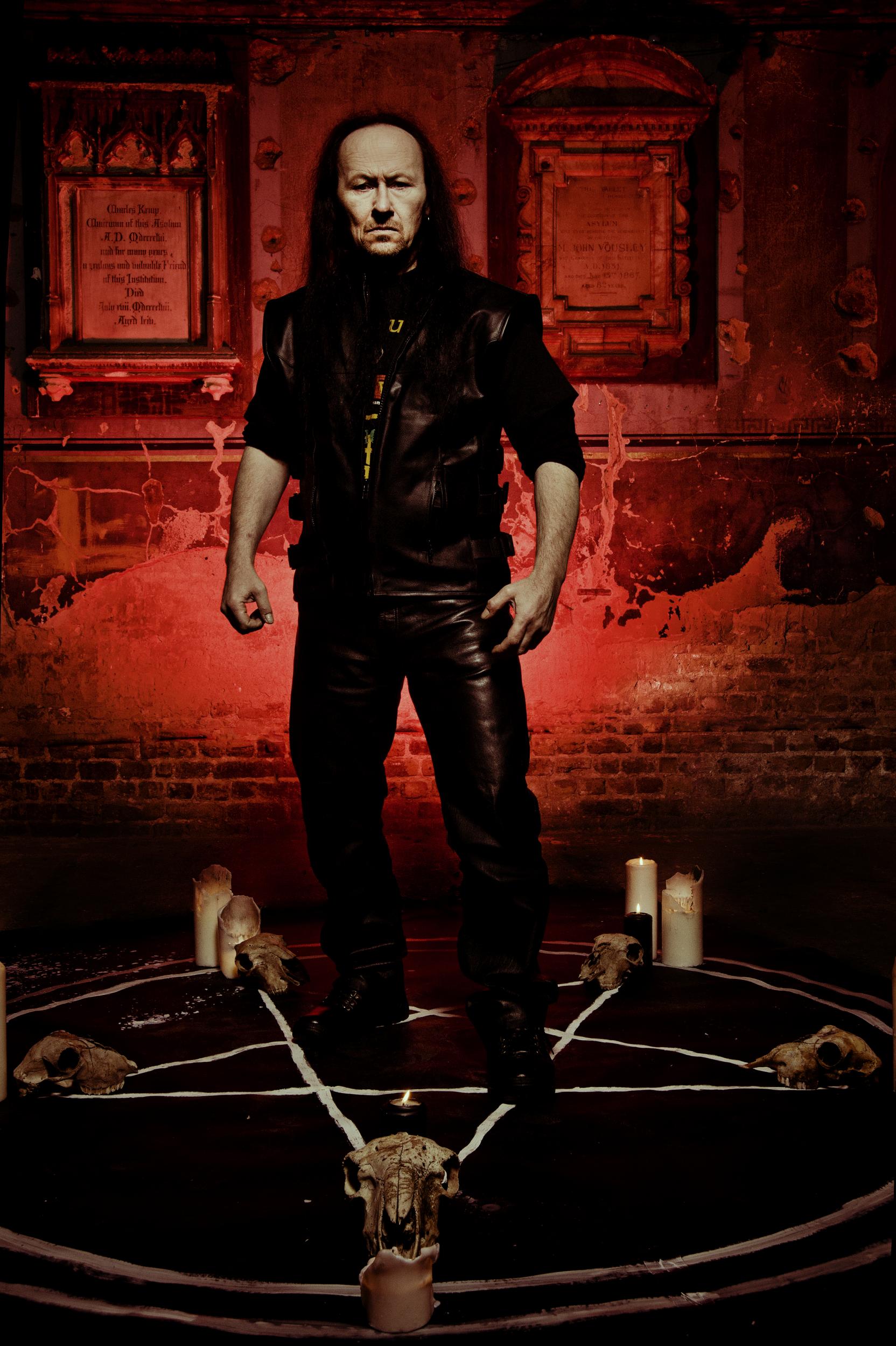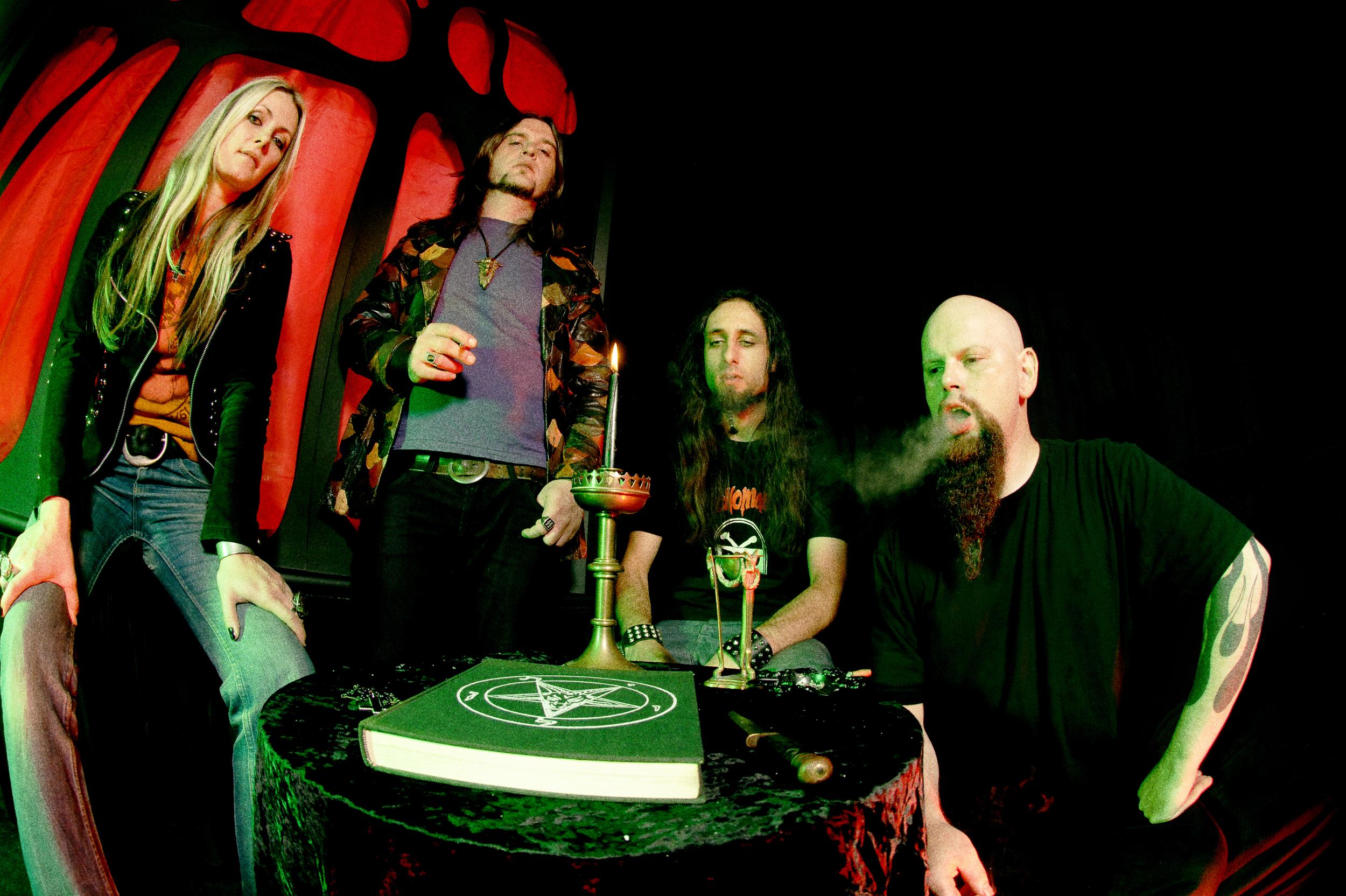Metal photographer Ester Segarra interview: 'The band were covered in pig's blood. I have used human ashes, too'
The most out-there metal bands go to Spanish artist Ester Segarra to bring their tortured images to life

Standing at a compact 5ft 2in, ever-smiling Spanish artist Ester Segarra hardly cuts an intimidating figure. Yet, with towering standards, a no-nonsense attitude and a unique ritualistic approach to photography, she has earned the hard-won respect of the world’s most extreme bands.
Satanists, pagans, anarchists and church burners go to Segarra to bring their images to life, and she has the creative know-how to get these tortured subjects to bare their souls, sometimes reluctantly, in front of the camera.
“With [Swedish black metal band] Watain, we did snakes – we had all these boxes full of snakes on the set,” she tells The Independent from her second flat in Stockholm, home of death metal, where she lives with her partner, a chef. The other half of the time she resides in London, where her 15-year career documenting niche genres of heavy music has been made.

“They were covered in pig's blood, which was interesting. I have used human ashes, too. I didn’t ask questions, but I trusted that if they were being used, then [the band] had permission to use them.
“I’ve used fire paste to set parking lots on fire. I use a lot of fire: torches on fire; scythes on fire; a bow and arrows on fire.
“Sometimes, it’s been close to going wrong on set, but amazingly, there hasn’t ever been a huge accident,” she reassures. “I always have wet towels and a fire extinguisher.”
These describe just a handful of the shoots Segarra has masterminded for magazines and metal labels. From the pomp and ceremony of satanic rock band Ghost to the ghoulish corpse paint of Norwegian Occultists Abbath, she creates fantastical images that transport their audience from the comfort of their homes to the darker recesses of their imaginations; a course that now seems unlikely, given her strict Catholic upbringing in post-Franco Barcelona.
“I was very shy as a child. I used to paint and draw a lot. I was always into creative stuff that was never encouraged.
“In Spain, there was a dictatorship and people were angry. I grew up in the late 1970s, early 1980s, when the country was getting its first taste of freedom. The culture was subversive. There was a little devil attitude. I grew up influenced by the first generation that were given room to do something that wasn’t allowed.”

Much against the wishes of her parents, she was drawn away from an academic degree in economics to train in photography. She pursued her passion in London, working waitressing jobs to fund her studies and taking pictures of glass sculptures – something she still finds pleasure in today.
It was a little white lie that got her into a gig with a camera for the first time.
“Nebula was playing at the Borderline and I wanted to go to the gig. It was sold out, so I told the venue that I worked for a Spanish magazine and asked for a photo pass. Amazingly, it worked.”
Seizing her opportunity, she sent the shots to several extreme publications, including Terrorizer. The editor liked them so much that he offered her a job. Fast-forward 15 years, and she’s one of the most sought-after extreme metal photographers in the industry. Why? Through determination, skill and negotiation.
“Some people have very particular ideas,” she says of how she collaborates with larger-than-life personalities. “You could take these approaches as difficult, but they take their art seriously. Sometimes, there is a clash of ideas.
“There are provocateurs, but you don’t get respect by default – you earn it. They will do things they know will make you feel uncomfortable. It is about the strong, not about the weak. If you’re a cry baby, you better go somewhere else, because you’re going to cry.”

A notoriously challenging character she found herself face-to-face with was Varg Vikernes, formerly of one-man Norwegian black metal project Burzum, an act considered among the genre’s most influential. In 1994, Vikernes was sentenced to 21 years in jail for the murder of Oystein “Euronymous” Aarseth, the guitarist of rival band Mayhem (whom Segarra has also worked with). He was also found guilty for the arson of three Christian churches. He maintains a fearsome reputation for his far-right ideology and hatred of the media.
“I was well aware of what he had done, and I do not condone it,” she continues gravely, “but I was curious about him.
“I was expecting him to be unfriendly, unhelpful and suspicious of me – not only am I Spanish, but I was also from the media! At first he was distant and cold, but at one point, the ice broke and he was actually warm, funny.
“I’ve met people on the streets who have given me the creeps more than him.”
Often with extreme bands comes extreme ideology, including, with artists such as Vikernes, fascism. With the rise of the far right threatening democracy in Europe, how does she feel about photographing artists who promote nationalistic views?
“What worries me more is the rise of absolutism,” she says. “Both by the far right and those fighting against it by being just as fascist in their approach. Is cancelling tours that different from book burnings? Cancelling tours based on rumours is just as much a threat to democracy.”
“Maybe there should be more talks about the fears and concerns that have lead to the rise of the far right instead.”
And then there is the misogyny. In the era of #MeToo, how do testosterone-fuelled bands singing about female dismemberment come to terms with their leading photographer being a woman?
“Unlike men, you are first seen as a woman and then for what you do. Yes, I have worked with people who might have taken me less seriously, but I haven’t let them get to me. I’ve just found a way to turn it around, in the only way I know, as a woman.”

One of the things Segarra takes extremely seriously is symbolism. She loathes gratuitous violence or insincere iconography, and though there is little subject matter that she will not capture, there is always an ethical line.
That isn’t with the use human skulls, however.
“There are some bands that have access to things that most people would not use. For me, if that band has a genuine ethos and understanding about what it means to use something, I am up for it. When a symbol becomes devoid of meaning, it becomes a cliché. And I hate clichés.
“They have to pay a price for what they use. You take something, you give something. Using a human skull for some people might be shocking, but if it is done with intent and with an awareness of the power of it… To me, it’s not different from people buying clothing when they don’t know where it comes from.
“A skull found after someone has died causes far less harm than having a child almost dying to make clothing for the west. Morally, I’d rather use a human skull than buy that skirt.”
To celebrate her prolific career thus far, Segarra has just released her first anthology called Ars Umbra, or ‘the art of shadow’.
The vinyl-sized book works on different levels. For those interested in photography, it provides a wealth of fascinating material capturing music’s most controversial subgenres. And if you’re a fan of the bands featured? Even better. There is one image, however, that she urges us all to take a moment with.
“The most special picture in the book is in a section called ‘In Memoriam’ that pays homage to the fallen. The last picture is of Selim Lemouchi from the Devil’s Blood and Erik Danielsson from Watain.
“It is a silhouette showing them sharing a cigarette. Selim was a personal friend of mine. That was the last time I saw him alive before he killed himself a few months later. It was a private moment and the sun was setting.
“When you take pictures of people, you hardly ever think that it will become connected to their death. That is the power of photography – it captures those moments beyond the grave.”
Ars Umbra is out now via Season of Mist
Join our commenting forum
Join thought-provoking conversations, follow other Independent readers and see their replies
0Comments